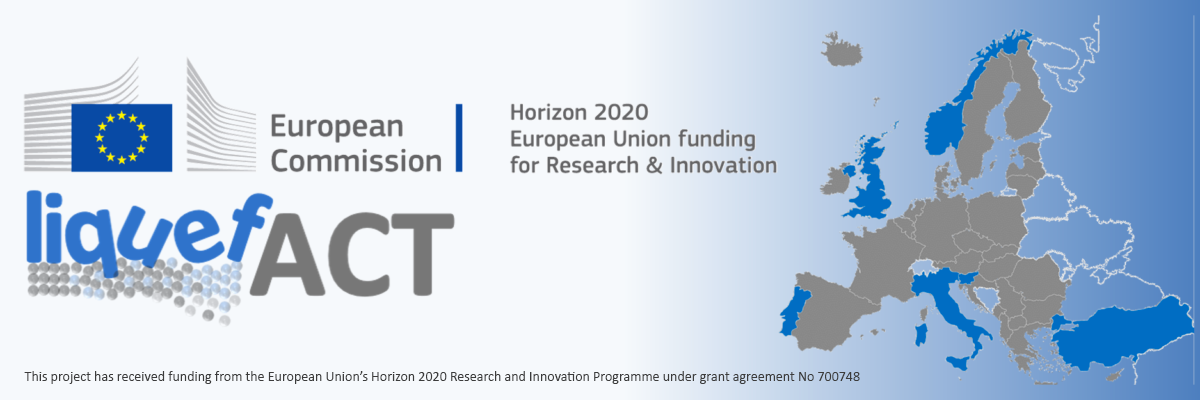Project Objective 1
Establish an EILD Risk / Resilience Assessment and Improvement Framework based on a common understanding amongst the consortium partners and relevant external stakeholders (expert/advisory groups), identifying physical, social, economic and environmental vulnerability and the appropriate mitigation strategies with the wider community context.
Project Objective 2
Develop a European liquefaction hazard map (macrozonation) and identify, based on the analysis of four European case studies (in Italy, Portugal, Slovenia and Turkey) a methodology to perform a localized assessment of liquefaction potential (microzonation), to be subsequently used to update the macrozonation framework.
Project Objective 3
Develop new simplified methodologies and define a protocol for the vulnerability assessment of structures and infrastructures to EILDs by establishing guidelines for the application of soil characterization and liquefaction risk assessment and performing liquefaction fragility analysis of the interacting earthquake-soil-structure system.
Project Objective 4
Comprehensively analyse, with the aid of seismic centrifuge tests and two full-scale field trials, a selection of state of the art liquefaction mitigation techniques suitable for small to medium-sized ‘critical’ infrastructures (“lifelines” and low-rise structures) which could have aggregated impacts of greater significance than initially perceived during an EILD.
Project Objective 5
Define vulnerability, resistance, resilience and adaptive capacity models applicable across the varying regions of Europe by developing multi-criteria assessment methodology, performance metrics and a built asset management (BAM) life cycle model.
Project Objective 6
Integrate all the previous methodologies into a LIQUEFACT Reference Guide (LRG) and a user friendly software application toolbox, working at individual structure/infrastructure or at regional/city level, wherein engineers or stakeholders involved in the design and implementation can be guided to assess the feasibility and cost-benefit of certain liquefaction mitigation techniques or compute the socio-economic impacts of risk reduction and resilience improvement strategies.
Project Objective 7
Validate the proposed LRG framework with a retrospective simulation of past EILD events and bring together the previous knowledge into guidelines enabling the task groups revising the EU Structural Eurocodes to produce technical standards for new and existing buildings where the potential EILD risk is identified and resilience measures incorporated.
